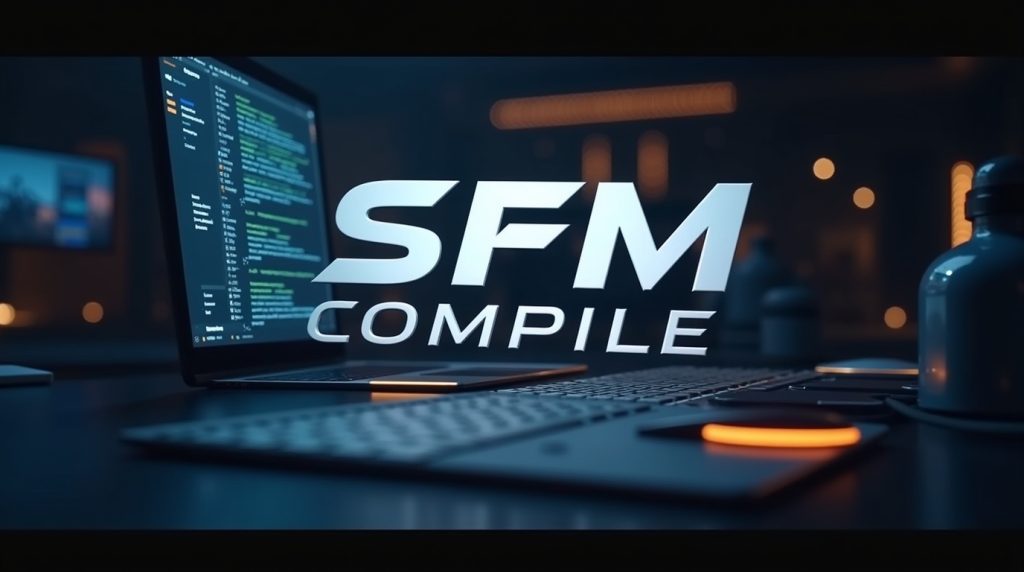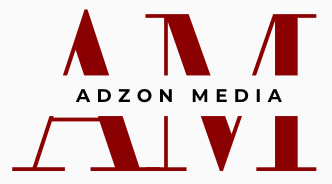
Are you prepared to advance your Source Filmmaker endeavors? If so, becoming proficient with SFM Compile is crucial. With the help of this effective technology, designers may transform their complex concepts into finished goods that audiences can appreciate and distribute. Whether you’re making animations, movie scenes, or bespoke models, knowing how to efficiently gather assets will improve your workflow. Discover the features and advantages of SFM Compile, which is your entry point to top-notch projects.
What is SFM Compile?
SFM Compile is the process for preparing and converting your assets to be used in Source Filmmaker. It includes models, textures, animations, and maps. It’s a bridge between the raw files created by the artists and the visual outputs that are seen in the SFM project.
Compiling assets correctly ensures that the software renders their work smoothly. Compilation is essential for maintaining performance and quality during animation production. Projects can be plagued by glitches and poor visuals without effective SFM Compile techniques. This hinders creative expression.
SFM Compile is a tool that allows you to compile source films into a single file.
SFM Compile is a tool that allows you to convert raw assets into formats suitable for your projects. This involves converting 3D models, textures, and animations to be seamlessly integrated into your film. This ensures that all elements work correctly in the SFM environment.
SFM Compile also streamlines workflows, allowing artists and designers to efficiently manage complex asset pipelines. It helps to maintain consistency and collaboration between team members. Creators can concentrate more on the story than on technical problems with effective compilation processes.
Tips Compilation Features
Compilation functions are crucial to bringing Source Filmmaker projects alive. These functions streamline the transformation of raw assets into components that can be used for animation. Understanding these functions is crucial for SFM users.
This workflow is built around three main components: model compilation (MDL), texturing conversion (VTF and VMT), and animation integration (QC Files). The functions play a role in ensuring models perform well and look good, while maps create immersive environments. These functions will enhance your creativity.
Model Compilation (MDL)
Model compilation is an important step to prepare your assets for Source Filmmaker. This process converts 3D models to a format that SFM can render and recognize. It involves converting raw model files from Blender, Maya, or other 3D software into MDL files with tools such as Crowbar or StudioMDL.
During the process, you will define important properties, such as hitboxes or collision models. The MDL compilation will ensure that your objects and characters behave realistically in the animation environment. This step is crucial to avoid visual glitches and unexpected behavior.
Texture Conversion: (VTF and VMT)
The texture conversion process is an important step in SFM compilation. This involves converting your image files to VTF (Valve Texture Format) and creating the corresponding VMT files (Valve Material Type). These formats optimize your textures for use in Source Filmmaker. They provide detailed visuals and efficient performances.
This task is made much easier by using tools such as VTFEdit. Importing images, editing properties, and exporting to the desired formats are easy. Well-defined textures not only improve visual fidelity but also ensure compatibility with different models and environments.
Animation Integration
The integration of animations is an important step in compiling SFM. QC files are crucial in linking animations with models. These scripts determine how animations interact and behave within Source Filmmaker. This ensures that character movements look fluid and natural.
Accuracy is essential when preparing your QC file. Each entry specifies the animation sequences and frame rates as well as other important parameters. The workflow is streamlined, and problems are reduced when using SFM with a well-structured QC. This aspect will improve the quality of your project.
Map Compilation: VVIS, VVIS, VRAD
Three processes are critical to the compilation of maps in Source Filmmaker: VBSP (Virtual Layout Studio), VVI, S, and VRAD. VBSP creates the geometry needed for your map. It does this by converting the layout to a binary format that the SFM can understand. This step is the foundation of your scenes. It ensures that all elements are correctly positioned.
VVIS optimizes the visibility calculations after establishing geometry using VBSP. It calculates the areas that will be visible to players at any time. VRAD calculates how light interacts with your environment. These steps enhance visual quality and performance in your projects.
SFM Compile: How Does It Work?
SFM Compile transforms raw assets to Source Filmmaker-compatible files. The first step is to gather all the necessary components, including animations, textures, and models. This preparation is organized to ensure a smooth flow of compilation.
The tools, such as Crowbar or StudioM, DL, are then used to create the assets. These applications perform various tasks, such as converting model formats or compiling textures. This operation ends with the generation of QC scripts, which dictate how elements will interact in SFM.
Compilation Process Step-by-Step
It is essential to follow a step-by-step process for compiling your SFM project. Organise your assets in a clear folder hierarchy. It will make it easier to find files, and you can start the compilation knowing that everything is organized.
Use tools such as StudioMDL or Crowbar to compile your models. VTFEdit is a great tool for texture conversion. It will prepare your visual elements to be used in Source Filmmaker. Running QC scripts allows you to integrate animations seamlessly. This will help you prepare for successful testing in Source Filmmaker. Each step is important in order to achieve polished results.

Prepare Assets and Folder Structure
Organizing your assets before you begin the SFM compilation process is essential. To keep things organized, create a folder structure that is easy to understand. Start by creating main directories for maps, models, animations, and textures. This will save you time and prevent confusion.
Next, ensure that all necessary files are available. Put your model files, textures, and animations in the folders you have designated. By keeping related materials together, you can streamline the compilation and troubleshoot issues that might arise during Source Filmmaker rendering.
Crowbar or StudioMDL
Crowbar and StudioMDL will be essential for assembling models in Source Filmmaker. Crowbar has a friendly interface that makes it easy to handle the complexity of model compiling. It supports a variety of formats and simplifies the conversion of files into MDL format.
StudioMDL, on the other hand is a command-line tool with powerful options. It’s aimed at advanced users. It requires more technical expertise, but its flexibility allows for complex customizations to be made during the compilation. The choice between the two is based on your needs and preferences within SFM projects.
VTFEdit for Textures
VTFEdit allows you to manage textures in SFM projects. You can convert images to the VTF format, which is required for Source Filmmaker’s rendering process. It is easy to import files and export them quickly with the intuitive interface.
VTFEdit allows you to create texture variants, manage multiple resolutions, and more. Your animations will look vibrant and crisp thanks to this flexibility. VTFEdit is a powerful tool that will improve the visual quality of any project, whether you are working on environment maps or character skins.
Running QC Scripts
The SFM compile is not complete without running QC scripts. These scripts determine how Source Filmmaker will process your models and animations. The QC file dictates everything from the model properties to the bone structure.
Navigate to the command prompt or terminal. Enter the commands required to run it in Crowbar or StudioMDL. You should be on the lookout for errors during this stage. Resolving these early will save you time when you test assets in SFM.
Test assets in Source Filmmaker
It’s important to test your assets in Source Filmmaker once you have compiled them. Load your project into SFM to see if it looks as you expected. Check for missing textures or models that were not integrated correctly during compilation.
It is important to navigate through the timeline of animations in order to ensure that they play smoothly. It’s important to review your QC file and asset structure, and check for any glitches. You may need to make adjustments before you can finalize your work. So, patience is key when troubleshooting issues.
Typical compilation errors and fixes
Errors are common when using SFM Compile. Missing dependencies can cause the compilation to stop. To avoid this problem, always double-check to make sure all files required are in the correct directory.
A second problem is caused by incorrect QC script syntax. Compilation failures can be caused by simple typos or incorrectly formatted commands. Using a text editor that highlights syntax and checking your QC scripts can help you catch mistakes before they cause problems during compilation.
Compile SFM Best Practices
Maintain an organized folder structure to ensure a smooth SFM Compile. Separate your source files from your compiled assets and textures to avoid confusion. Proper naming conventions will help you locate resources quickly when needed. Back up your work regularly to avoid losing progress.
It is important to test assets in Source Filmmaker following each compilation. This helps to identify problems early, which can prevent larger headaches in the future. Document all errors and the fixes to be used in the future. These best practices will help you streamline your workflow and increase productivity when working on your project.
Workflows for Automated and Batch Compilation
Source Filmmaker’s automated and batch compilation workflows will improve your efficiency. You can save time by compiling multiple assets at once. This is especially useful for large projects that need a lot of models, textures, and animations.
You can create a pipeline using tools such as Crowbar and custom scripts. Once you define the parameters, let automation take care of repetitive tasks. These advanced techniques will improve your animation workflow, allowing you to concentrate on the creative aspects of your projects.
SFM Compile: Community Tools and Resources
Collaboration and knowledge sharing are key to the Source Filmmaker community. There are many tools and resources available to help streamline the SFM compilation process. Websites such as GitHub offer a wide range of scripts, utilities, and plugins created by developers who are passionate about improving your workflow.
Forums like Facepunch or Steam Community provide valuable insight from experienced users. There are tutorials, guides for troubleshooting, and even asset packs to simplify your projects. By engaging with other creators, you can discover hidden gems to elevate your animation in ways that you may not have thought possible.
Why SFM Compile is Important in Animation Pipelines
SFM Compile is a key component of the Source Filmmaker animation pipeline. It simplifies the conversion of raw assets to usable formats and ensures that they work seamlessly in the SFM environment. It improves workflow efficiency by facilitating texture conversion, model compilation, and map processing.
Understanding SFM Compile also allows creators to troubleshoot issues that may arise during asset integration. This knowledge allows animators the ability to create high-quality content without any hiccups.
Artists will be able to elevate their projects as they explore the powerful toolset. SFM Compile will help you bring your creative ideas to life.





